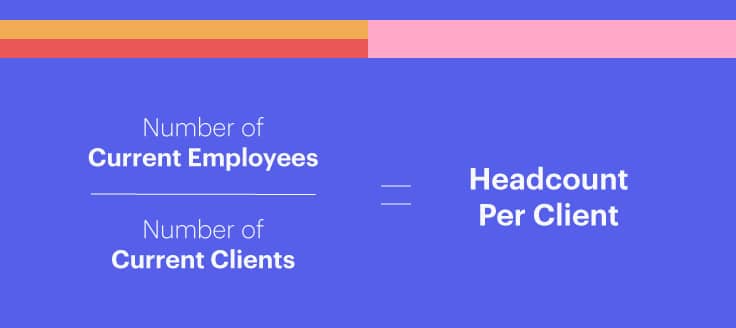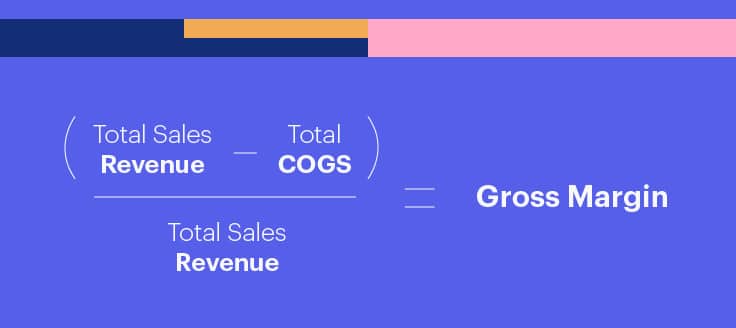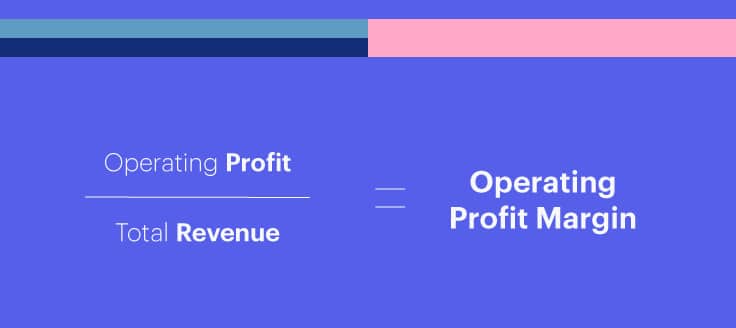A revenue forecast is essential to your company’s success. This projection can help you understand your margins, improve production schedules, manage credit, anticipate when you’ll get paid and more.
Here’s everything your business needs to know about how to forecast revenue, including:
- Different revenue forecasting models
- Expense estimations
- Key ratios
- Revenue projection samples
- Importance of revenue forecasting
What Is a Revenue Forecast?
A revenue forecast is an estimation of the amount of money your business will generate during a particular period of time. Understanding the “right time” to make critical investments in your business starts with this forecast. Whether you plan to launch a new advertising campaign, increase inventory before peak seasons or hire another team member, your goals need to coordinate with your revenue projection.
A revenue forecast can be applied to your whole business, individual departments or specific initiatives, such as an advertising campaign. For businesses with aggressive growth plans, learning how to project revenue can help convince potential backers to invest in your business.
Comparing your latest financial data to your revenue projection is a great way to gauge your business’s progress. While no revenue forecast will be 100% accurate, projecting your revenues greatly improves your ability to make the best decisions for your business.
Judgment Forecasting vs. Quantitative Forecasting
There are many ways to project revenue, but small business owners frequently use these revenue forecasting methods: judgment forecasting and quantitative forecasting.
Judgment forecasting is a prediction made by someone familiar with your business — typically either the business owner or another senior leader — relying on organizational knowledge and experience to provide an expectation of the year’s income and expenses.
Quantitative forecasting is more systematic and uses historical revenue data from your own business to follow tendencies and predict market progression. Recorded revenue data from other businesses in your industry also can be used to influence your quantitative forecast.
-
Types of Quantitative Budget Forecasting Techniques
If you favor the data, there are a few popular methods of quantitative budget forecasting. Keep in mind, using a spreadsheet with formulas, such as Microsoft Excel or Google Sheets, can make it easy to calculate figures. There are also revenue forecasting programs you may consider using, such as Streamline, InsightSquared and Anaplan.
1. Straight-Line Method
Learn how to project revenue growth rate and forecast with the straight-line technique. With this method, future revenue growth is predicted using historical trends and figures.
You’ll first need to determine the sales growth rate you’ll use to calculate future revenues. You can do this by comparing the growth in 2 previous years, dividing the more recent year’s revenue by the former year’s revenue (e.g., Revenue from year 2022 / Revenue from year 2021).
You could then assume the growth rate will remain constant and apply it to future years, multiplying the previous year’s revenue by the growth rate and continuing that pattern to project out future years.
For example, if you found your growth rate to be 5% and you wanted to project your revenue for 2024, you’d take your revenue from 2023 and multiply that by 5% to see how much more revenue you could expect in 2024.
If you wanted to project for 2024 and assumed the same growth rate, you’d take your projected revenue for 2023 and multiply it by 5% to find out how much more you’d earn in 2024, and so on.
2. Moving Average
This financial forecasting method is used to more clearly look at the underlying pattern of a data set, such as trends and seasonality, to estimate future values. Often, a 3-month or 5-month moving average is calculated. To determine the former, you’d take the revenue from the most recent 3 months, including the current month, and find their average. You could then apply that same formula for the remainder of the year. Similarly, you could do the same in 5-month increments.
3. Linear Regression
Businesses can conduct a type of statistical data analysis known as linear regression. Companies might create linear regressions to produce sales estimates, analyze the impact of price changes, assess risk, evaluate supply and demand, understand inventory levels and gauge business trends.
There are a couple of types of linear regression techniques used for forecasting that can shine a light on the relationship between variables that a business wants to evaluate, including simple and multiple linear regression.
While simple linear regression uses a single element to establish forecasts, multiple linear regression shows the relationship between 1 dependent variable and multiple independent ones.
For instance, let’s say you wanted to forecast future inventory levels needed for your company, which are affected by customer sales. You want to see how closely these variables are related (e.g., how much sales affect your stock levels). In this case, your inventory levels would be the dependent variable because they “depend” on the amount of revenue you’re able to take in from your customers, the independent variable.
Of the 2 models, multiple linear regression is considered to be more accurate.
How to Forecast Revenue for Your Business
So, what’s the best way to forecast revenue? The answer can vary. Many business owners use a combination of each revenue forecasting method. By merging judgment and quantitative forecasting techniques, your analysis benefits from precise, historical data as well as the intuitive advantage that comes from years of experience.
Let’s break down how to create your revenue projection.
1. Start With Your Expenses
There are 2 main categories of expenses that impact your business: fixed costs and variable costs.
Fixed costs are any bills or charges that remain the same regardless of how much your business is producing or how many clients you’re serving.
Some examples of fixed costs include:
- Rent
- Property taxes
- Salaries
- Utilities
- Insurance
- Interest expenses
- Amortization
- Depreciation
On the flip side, variable costs fluctuate with the ebbs and flows of the business.
Examples of variable costs include:
- Cost of goods sold
- Materials and supplies
- Packaging materials
- Labor
- Sales commissions
- Direct marketing
- Customer care
- Credit card fees
As you’re reviewing your expenses and folding them into your revenue projections, remember:
- If you’re preparing your marketing and advertising budget, double your original estimate. It’s common for these costs to exceed initial calculations.
- Much like marketing and advertising, legal, insurance and licensing fees can outpace your estimates. If you have no experience in these areas, it’s suggested you overestimate them — even by 3 times as much.
2. What’s Changed in Your Business?
When you’re working on a revenue forecast, consider the pieces of your business that have changed and could impact future earnings. Maybe you added personnel, new product verticals or have a more competitive pricing model. These matters as well as shifts in your competition and any other factors — such as new legislation — could affect your business, too.
3. Calculate Anticipated Revenues
At this point in your revenue projection, you should begin separating each source of income and segregating any variables for the business. This will provide a clear view of any positives and negatives in each revenue stream.
From each source of income, list the amount of revenue expected during the business’s review period (monthly, quarterly or as needed, etc.) for your earnings and revenue. Arranging your data this way will reveal the total expected revenue for the desired time frame.
-
Forecasting Example
Jennie’s Jellies expected $27,120 from farmer’s market sales and $91,630 from its grocery partners in the second quarter. With these figures, Jennie’s Jellies would have a total expected revenue of $118,750.
Revenue Sources Q2 Farmers Markets Grocery Stores Total Revenue $27,120 $91,630 $118,750
4. Aggressive and Conservative Revenue Forecasts
By using two financial forecasting methods for your revenue — one aggressive and one conservative — you’ll force yourself to think boldly to achieve your growth goals and rationally in the event you need to scale back.
-
Forecasting Example
Aggressive Forecast
- Low price point for standard jellies, higher price for choice, small-batch jellies
- Increasing promotional efforts from 3 to 4 marketing channels managed by a new marketing manager as well as adding 3 commission-based salespeople
- One new jelly or complimentary product added by the fourth quarter, with 3 more products introduced within the next 18 months
Conservative Forecast
- Low price point, no additional premium pricing
- No new marketing channels introduced
- Sales staff remains the same
- 1 new jelly introduced each year for the next 36 months
The aggressive forecast is a fuller and more aspirational estimate. While there are no numbers tied to the bullets in these examples, when executed properly, the aggressive revenue forecast could incur more expenses than the conservative forecast, but generate greater opportunities for continued growth.
5. Double-Check Your Key Ratios
Employing an aggressive revenue forecast will provide more opportunities while potentially driving greater expenses. You can balance your revenue and expenses by reviewing a few ratios that impact how much you can invest back in your business.
Gross Margin
Your gross margin gives you the best view of your costs relative to your revenue, allowing you to make the most informed decisions for your business.
To determine your gross margin, subtract your total cost of goods sold (COGS) from your total sales revenue and then divide that figure by your total sales revenue. The gross margin will be presented as a percentage.
Operating Profit Margin
This formula is a ratio of your business’s performance used to determine the percentage of profit you have produced from your transactions, before deducting taxes and interest charges.
The operating profit margin is calculated by dividing your operating profit by your total revenue and is expressed as a percentage.
Overall Headcount Per Client
If you aim to manage more client accounts in the next few years, how much you currently spend on headcount per client should be factored into your revenue and payroll assumptions. The formula for this is simple: Divide your current number of employees by the total number of clients you have. If you’re currently working alone with aspirations to increase your team, this ratio is especially important to you.

How to Estimate Revenue for a New Business
If you’re a startup and don’t have historical data to make your projections, here are steps to take to forecast your business’s revenue for your first year.
- Estimate maximum number of sales
- Estimate local demand (and adjust estimate sales if needed)
- Estimate the price for your product or service
- Multiply your expected sales by the price of your product or service
- Estimate production or purchasing costs for the items you will be selling
- Subtract your estimated expenses from revenue.
Consider projecting a couple of scenarios, including an aggressive forecast as well as a more conservative one.
Why Is Forecasting Important for Your Business?
While establishing an accurate set of growth projections for your business takes time, a revenue projection gives you the best chance to achieve your goals. Even as you experience the evolution and progression of your business, forecasting revenue will keep you in touch with your company’s financial health, give you a relatively accurate picture of how your company is doing and help you make crucial business decisions, such as those related to staffing, budgeting and expansion.
Additionally, concrete revenue projections will open your business to the possibility of leveraging financial products, such as business loans, to help expedite and accomplish your goals for growth.
Be honest about your expenses and how your business has evolved — and don’t be afraid to make bold revenue forecasts as you map out your growth. If you need additional help, you can find revenue forecasting software on the web.













